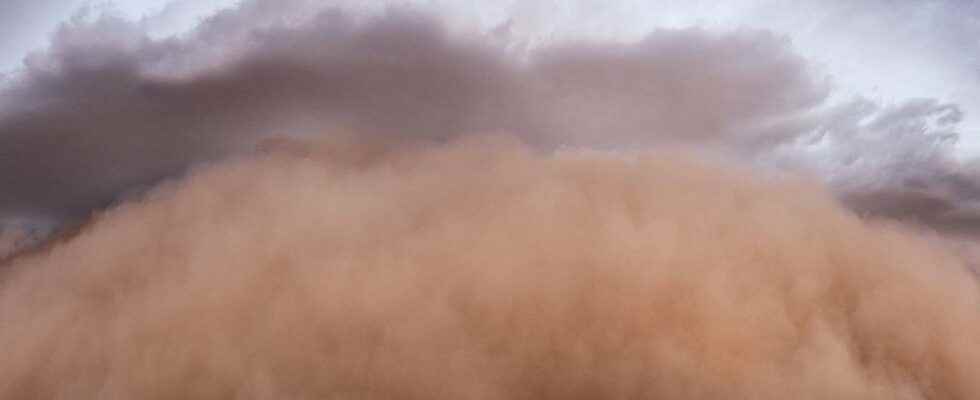In desert regions, it happens that a gigantic wall of sand breaks at high speed on a city and plunges it completely into darkness: this is the haboob, the sandstorm generated by a storm.
You will also be interested
[EN VIDÉO] 5 clouds to recognize to predict the weather For millennia, humans have learned to predict the weather through cues from nature. Among them, clouds can give a good idea of the short-term weather.
The haboobs phenomenon occurs several times a year, and sometimes even several times a month, in the deserts American, Australian, or African. The term of haboob (meaning ” wind strong” in Arabic) is also a word used at the base in the Sahara to describe the storms of sand. This phenomenon is very different from the gigantic clouds of sand which sometimes cross France, or even Dust Devilsthese little whirlwinds of dust that look like tornadoes.
Haboobs are violent and sometimes destructive sandstorms that form ahead of clouds thunderstorms. The strongest thunderstorms which occur in spring and summer in desert regions (Sahara, Iraq, or even Arizona, Utah and Colorado in the United States) generate gust fronts: these are descending currents which materialize in very strong winds. sudden and very powerful (reaching 90 to 100 km/h or more) capable of causing damage similar to that of classic storms.
When this gust front breaks over the desert dust, the particles are lifted, creating a veritable wall sand. This wall stands out perfectly on the haboobs videos, it shows up at the front of thethunderstorm, in front of or under the arch, this impressive rolling cloud. The wall of sand generated by the wind from the storm can spread over 100 km in length and can reach several kilometers in height.
Dramatic consequences in the city, but also on health
When he arrives at a city, at a speed average speed of 30 to 70 km/h, this wall of sand plunges her into darkness for a few minutes. The consequences are often catastrophic, with serial pileups and casualties. In the United States, any haboob formation results in an immediate red alert: traffic is restricted, barbecues are prohibited due to the risk of fire, and air traffic is brought to a complete halt. The surroundings of Phoenix and Tucson, Arizona are renowned for their frequent high-profile haboobs. In the Sahara, haboobs regularly form around the Atlas Mountains. In the Arabian Peninsula, Iraq and Kuwait are frequently affected by the phenomenon.
Evolution of a haboob in the desert of Arizona, USA, in July 2018. © Reed Timmer
This violent meteorological phenomenon also has harmful consequences on human health: the sand that is dispersed in theair is not only loaded with pollution, but also with bacteria and mushrooms. The inhabitants of the desert areas affected by these walls of sand are subject to respiratory and pulmonary problems. Three to four days after a haboob passes, hospitals are usually overwhelmed with patients. The phenomenon weather report is at the origin of the eponymous disease, the syndrome haboob lung”, a sometimes permanent and chronic infection in some people.
صورة التقطها المصور السعودي
سلمان فهد العبدلي العنزي توثق لحظة دخول عاصفة رملية للعاصمة السضالوديةشهدت منظقة الخليج هذا الاسبوع سلسلة عواصف ترابية ضربت العراق ثم الكويت فالسعودية وخيرا الإمات. pic.twitter.com/Py2rjUyOwI
— Haitham El-Tabei التابعي (@Haithamtabei) May 19, 2022
Right now, receive the Mag Futura for free by subscribing to our subscriptions!
Did you know that you can access Futura without ads via our subscriptions?
At the moment, you can discover this advantage with our special offer: subscribe to the “I participate in the life of Futura” (for a minimum of 3 months) and receive the Mag Futura at home* (worth €19)!
*Mag Futura is sent after the third month of registration.
Interested in what you just read?

